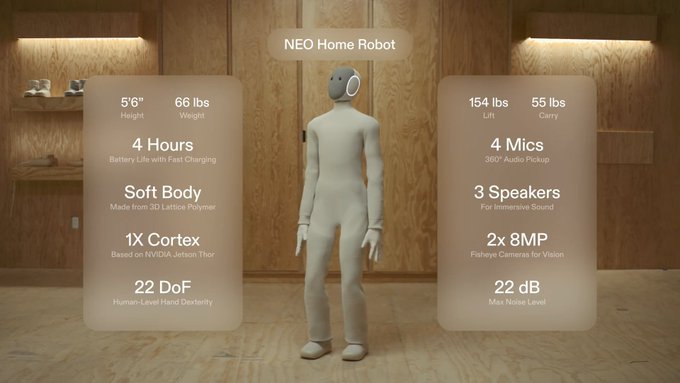- Published on
Figure CEO Brett Adcock Says Company ‘Will Not Teleoperate’ Robots, Drawing Contrast with 1X Strategy

Speaking at the NVIDIA GTC 2025 Pregame show yesterday, Figure CEO Brett Adcock drew a sharp line in the sand regarding his company's path to market, stating unequivocally that Figure will not use human-in-the-loop teleoperation for its commercial robots.
We will not do any of this soy stuff
"We will only launch a product in the home and in the workforce at scale once we feel confident of the product," Adcock stated during the panel discussion. "We will not do it early. We will not teleoperate them in market. Like we will not do any of this soy stuff. And I think that's maybe different from other groups maybe in the space."
Adcock's pointed remarks landed on the same day that robotics firm 1X opened pre-orders for its NEO humanoid robot, which is built around a human-in-the-loop strategy. 1X's "Expert Mode" allows human pilots to supervise and guide the robot, with that data being used to train the AI.
The 'Real Race' is for Intelligence, Not Manufacturing
Adcock's comments came in response to a question about the robotics competition between the U.S. and China. While acknowledging China's lead in some ways, Adcock argued that the industry's focus on manufacturing and cost is misplaced.
"I think what really matters today is we see the core like horizontal technology stack, both in hardware and software, an AI come together to build like general purpose, like almost like human-like intelligence in the physical world," Adcock said. "Like, that's the key unlock."

He dismissed manufacturing as a solvable "consumer electronics manufacturing process", not a complex automotive one, and claimed it is "an extremely tractable and surmountable problem".
The true challenge, he argued, is solving general-purpose intelligence, an area where he claims Figure is "miles ahead" of competitors and "leading... head and shoulders globally".
A Firm 'No' to Human-in-the-Loop
Adcock's dismissal of teleoperation appears to be a core part of this AI-first strategy. He positioned Figure's approach as one focused on achieving "autonomy with low human intervention rates" from the start.
To back this up, he noted that Figure has had a robot running at its "first commercial customer" on a "10 hour shift" for "almost six months now". During that time, he claims "fault rates, like human intervention rates... have all been dropping. Performance has been rising every single month".
This strategy stands in stark contrast to the one publicly detailed by 1X for its NEO robot. 1X is betting that a "social contract" with early adopters, who allow human "Expert Mode" operators to pilot their robots, will generate the data needed to achieve full autonomy over time. Adcock, in no uncertain terms, rejected this model.
A More Moderate Timeline?
While Adcock’s confidence in his company's technical lead remains high, his timeline for deployment appears to have become more moderate.
During the GTC panel, he projected that robots would appear "in the commercial workforce... now and in the next like year or two". For the much harder home market, he sees a path for it to "definitely be solvable... in like this like this decade".
This marks a more conservative projection than his recent appearance at the Dreamforce conference. At that event, Adcock claimed a humanoid could be performing general-purpose tasks based on speech commands in an unseen home as soon as "next year."
At the GTC panel, he offered a new analogy, comparing the factory setting to "car autonomy in a highway" and the home environment to "car autonomy in a city," which he described as "super unstructured, high variability".
Adcock's comments solidify Figure’s high-stakes bet: that solving general-purpose intelligence first is the only viable path, and that any reliance on human-in-the-loop piloting is a distraction from the real challenge.
Share this article
Stay Ahead in Humanoid Robotics
Get the latest developments, breakthroughs, and insights in humanoid robotics — delivered straight to your inbox.
